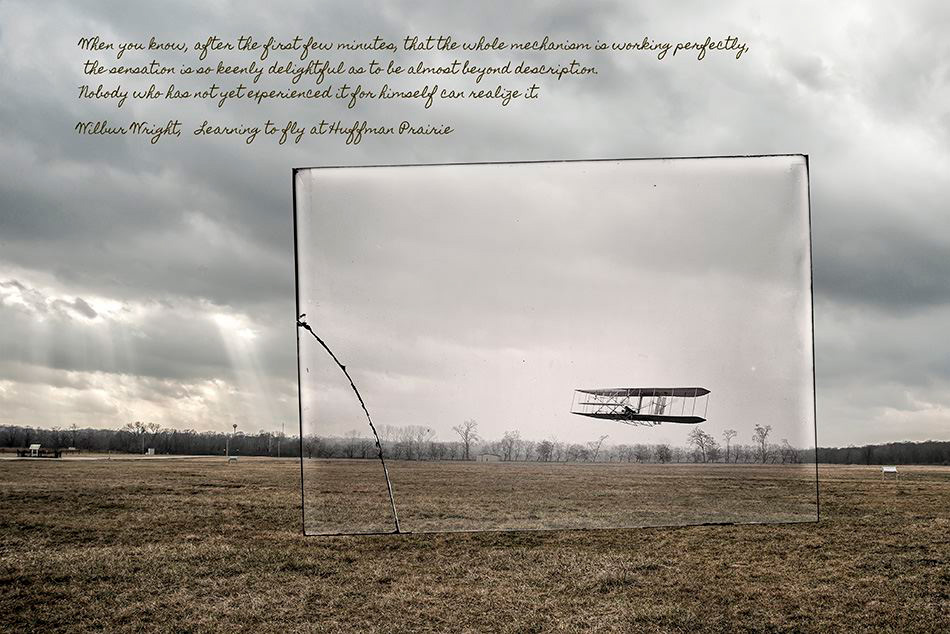

Flight #85
The original historic image was taken at Huffman Prairie on November 16, 1904, and is so sharp that you can almost see the propeller spinning. On that day, Orville flew a distance of 1,760 feet in 40 seconds or about 30 miles per hour. The Wrights’ original photos were made on glass plates. Often the glass plates cracked, and much of the time, the broken pieces were lost. In this case, both the main image and the fractured part remain. As a photographer, the glass plate’s crack is meaningful because it shows process and product simultaneously.
